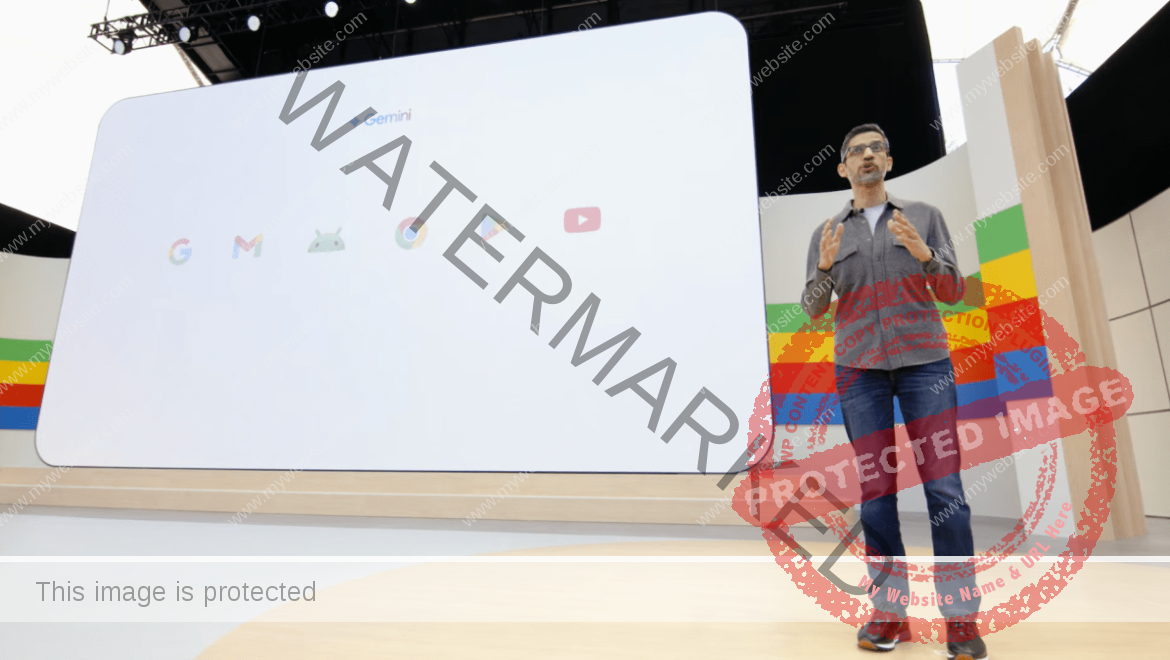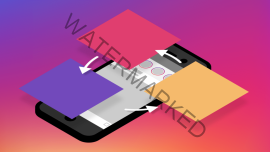Today is Apple iPad Event day, and we’re ready to bring you all the iPad goodness you can stand, including if some of the rumors are true of what’s coming, like a new iPad Pro, iPad Air, Apple Pencil and a keyboard case. Don’t have time to watch? That’s ok — we’ve summed up the most important parts of the event below.
iPad Air with M2 chip
The iPad lineup is getting a facelift today, and one of the most important additions is that it now comes in two sizes, the 11-inch display and a 13-inch display. The cost is $599 for 11 inch and $799 for 13-inch. You can preorder today, and it will be available “next week.” Read more
And, as a special bonus, Apple finally places the front-facing camera on the landscape edge of the iPad. Read more
iPad Pro with M4
The iPad Pro is being touted as the thinnest iPad ever. Features include a visual experience with an OLED display in two panels called Tandem OLED. It also has a nanotextured glass option for less glare. And, it features the next generation of Apple silicon called M4, a jump from M2. It also has a 12.9-inch iPad Air and new gestures for the Apple Pencil.
In the U.S., the 11-inch iPad Pro starts at $999 for the Wi-Fi model, and $1,199 for the Wi-Fi + Cellular model. The 13-inch iPad Pro starts at $1,299 for the Wi-Fi model, and $1,499 for the Wi-Fi + Cellular model. Read more
Inside the M4 chip
The M4 chip is the fourth generation of its custom SoCs. They feature a new display engine, as well as a significantly updated CPU and GPU cores. The base M4 chips come with 10 CPU and 10 GPU cores.
Apple claims that the new CPU is 50% faster than the M2 chips which powered the last generation of iPad Pros, while the GPU will offer a 4x increase in rendering performance, all while still offering the same performance per Watt as the M3. Apple stressed that the new GPU architecture features dynamic caching, hardware-accelerated mesh shading and ray tracing, something that’s a first for the iPad. Read more
Inside Tandem OLED
“We’ve always envisioned iPad as a magical sheet of glass,” said John Ternus, SVP, Hardware Engineering during Apple’s iPad event in Cupertino on Tuesday. “And with the new iPad Pro, we wanted to give customers an even more remarkable visual experience.”
The company did that by bringing OLED to iPad for the very first time, suggesting that the technology helps get the light and color accuracy that iPad Pro owners want – but that it lacks the brightness. The company solved that by creating the Tandem OLED screen, which can support an incredible 1,000 nits of full-screen brightness for both SDR and HDR content, and 1,600 nits of peak HDR brightness. The company says no other device delivers this level of display quality. Read more
Apple Pencil Pro
Shocking as it may seem, it’s been nearly a decade since the first Apple Pencil was announced, way back in 2015. The stylus hasn’t seen much in the way of updates since then. The most significant arrived in 2018, bringing magnetic charging to the line. Last year, meanwhile, saw the arrival of a less expensive model with fewer features and USB-C charging.
It comes in at $129. Many of the new features with the Apple Pencil Pro comes from the squeeze. You can take animations, move and rotate the object and even lens blurring. Read more
Magic Keyboard
Apple announced a new and improved Magic Keyboard, its keyboard accessory for iPad. This is the first major revision since 2020.
The Magic Keyboard has been “completely redesigned” to be much thinner and lighter, Apple says, and now includes a function row for quick access to controls like screen brightness. Beyond that, the new Magic Keyboard features aluminum palm rests and a larger trackpad. Plus it’s more responsive, Apple says, with haptic feedback.
In the U.S. the new 11-inch Magic Keyboard is available for $299 and the new 13-inch Magic Keyboard is available for $349. It comes with layouts for over 30 languages. Read more
Final Cut Camera
The latest version of Final Cut Pro introduces a new feature to speed up your shoot: Live Multicam. It’s a bold move from Apple, transforming your iPad into a multicam production studio, enabling creatives to connect and preview up to four cameras all at once, al in one place. From the command post, directors can remotely direct each video angle and dial in exposure, white balance, focus, and more, all within the Final Cut Camera app.
The new companion app lets users connect multiple iPhones or iPads (presumably using the same protocols as the Continuity Camera feature launched a few years ago). Final Cut Pro automatically transfers and syncs each Live Multicam angle so you can seamlessly move from production to editing. Read more
AI improvements
Much of Tuesday’s unveiling had to do with hardware, however, there was some teasing of new AI improvements. This included the upgraded M4 chip, which you can read more about above, which features a neural engine that’s “dedicated to the acceleration of AI workloads.”
The company also hinted that improved AI capabilities would soon be in the hands of iPadOS app developers, noting that the operating system software offers advanced frameworks, like CoreML, and that developers would be able to tap into its neural engine to deliver “powerful AI features right on device.” Read more
Inside the iPad lineup
Apple just updated its two high-end tablets: the iPad Air and the iPad Pro. While the entry-level iPad didn’t receive an update, the company lowered its price, too. And of course, yes, the iPad mini is still around.
Not sure which one is for you? That’s ok. We have a rundown of all of the iPads and what make them different. Read more












